ORION
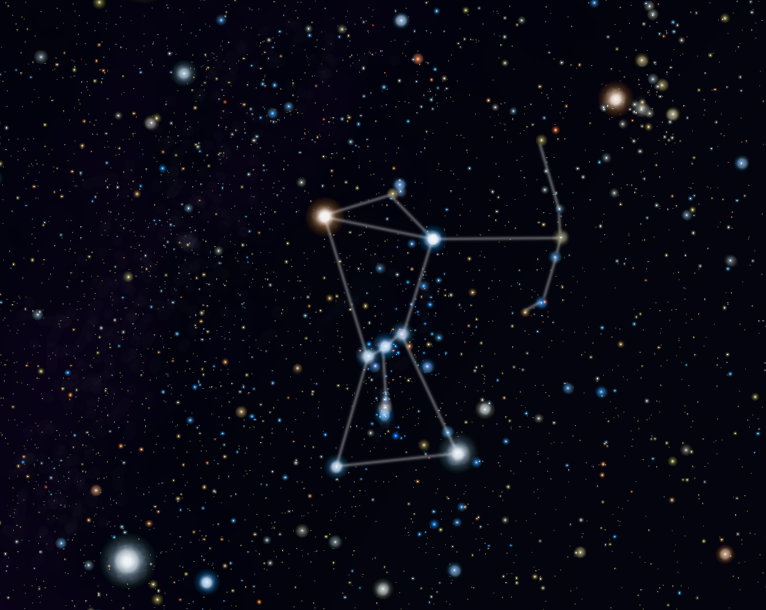
Roberto Mura - Own work,
CC BY-SA 3.0, wikimedia
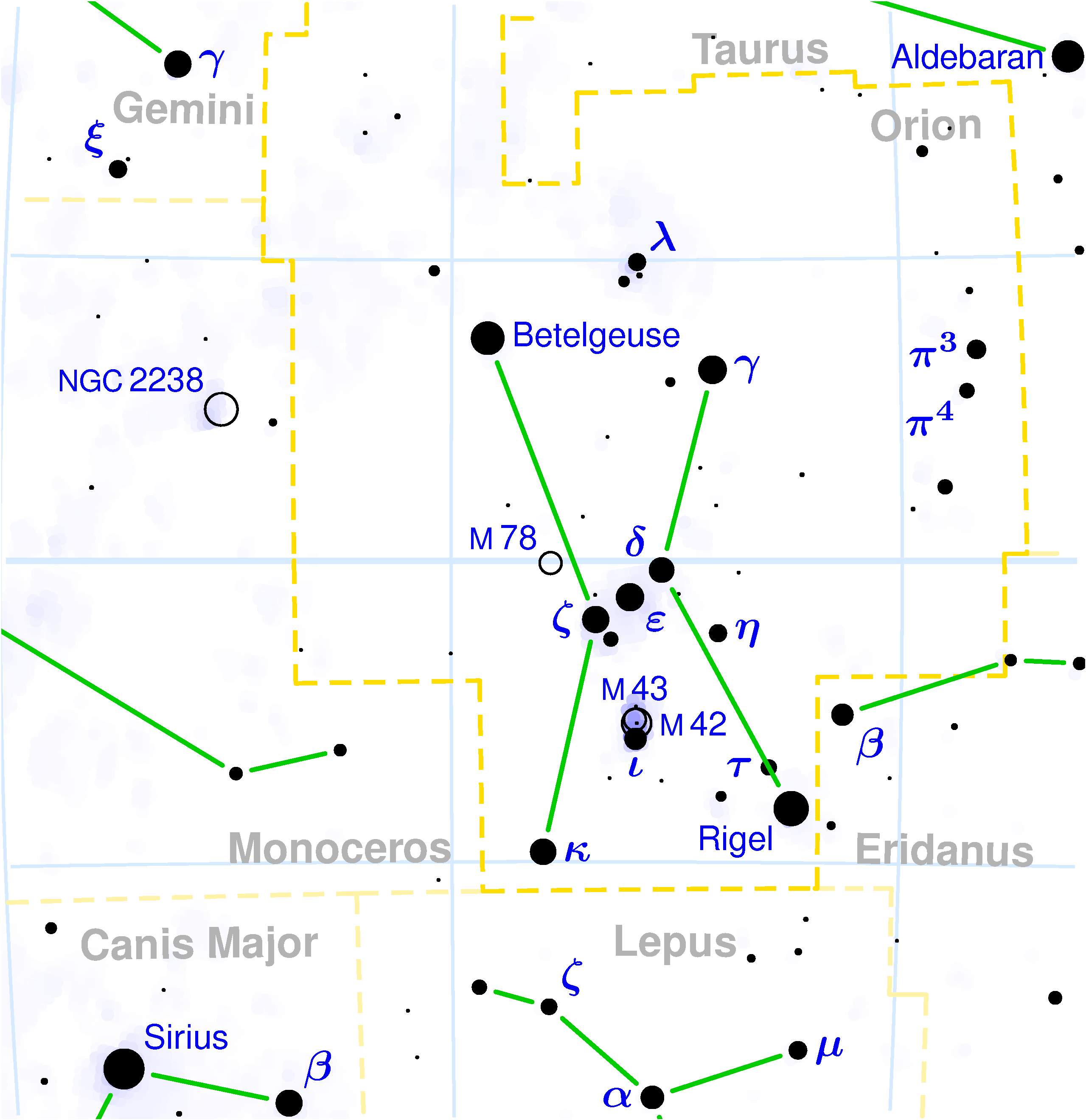
Copyright © 2003 Torsten Bronger,
CC BY-SA 3.0, wikimedia
Orion is a prominent constellation in winter and in the beginning of spring. The mythological figure is easily recognizable with its brightest stars plotting the shape of a giant. Orion is very useful as an aid to locating other stars. By extending the line of the three stars making up the Belt southeastward, we find Sirius (Canis major), the brightest star in the sky. Moving northwestward, Aldebaran, the Alpha star of the Taurus constellation can be reached. Connecting Rigel, the left foot, to Betelgeuse, the right shoulder, and continuing on this line, you will reach Castor and Pollux.
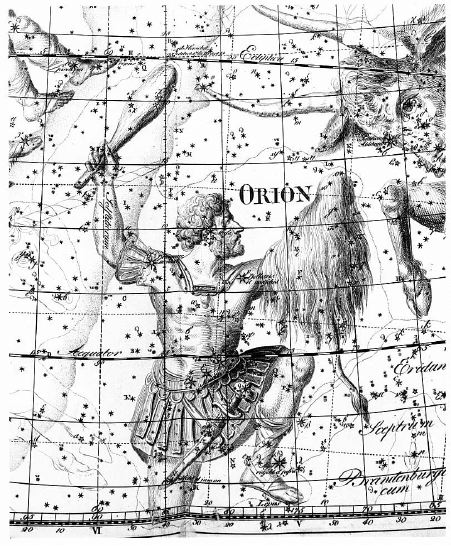
On his right shoulder is seen the shining star Betelgeuse, and his left foot is the Rigel star.
Three stars make up his belt.
GPL, wikimedia
The stars of the constellation are associated with a mythological warrior. In Greek mythology, Orion was the son of Poseidon and Euryale, a daughter of King Minos. Orion met his death when the conceit of the warrior was punished by Artemis. She sent a scorpion to kill him. The scorpion came out of a crack in the ground and stung the unsuspecting warrior. For this reason Orion and Scorpius are at opposite ends of the skies, when one rises, the other falls. This way they will never meet again.
Rigel serves as the left foot of the giant and is brighter than Betelgeuse even though it is the Beta star. It is the 7th brightest star in the sky and its blue color tells us that it is a young star with a high surface temperature. It is also a double star. Its companion is visible even with a small telescope. Its companion is also part of a binary star system but not visible with a telescope. It is 860 light-years from us.
In The Belt of Orion we find Alnitak, Alnilam and Mintaka looking from east to west. The central star, Alnilam an Arabic word which means ‘a string of pearls’ is an exceptionally bright star. It is one of the farthest stars to be seen with the naked eye. It is about 1,900 light-years away (606 parsec for the satellite Hipparcos) which means its intrinsic brightness is over 500,000 times that of the Sun.
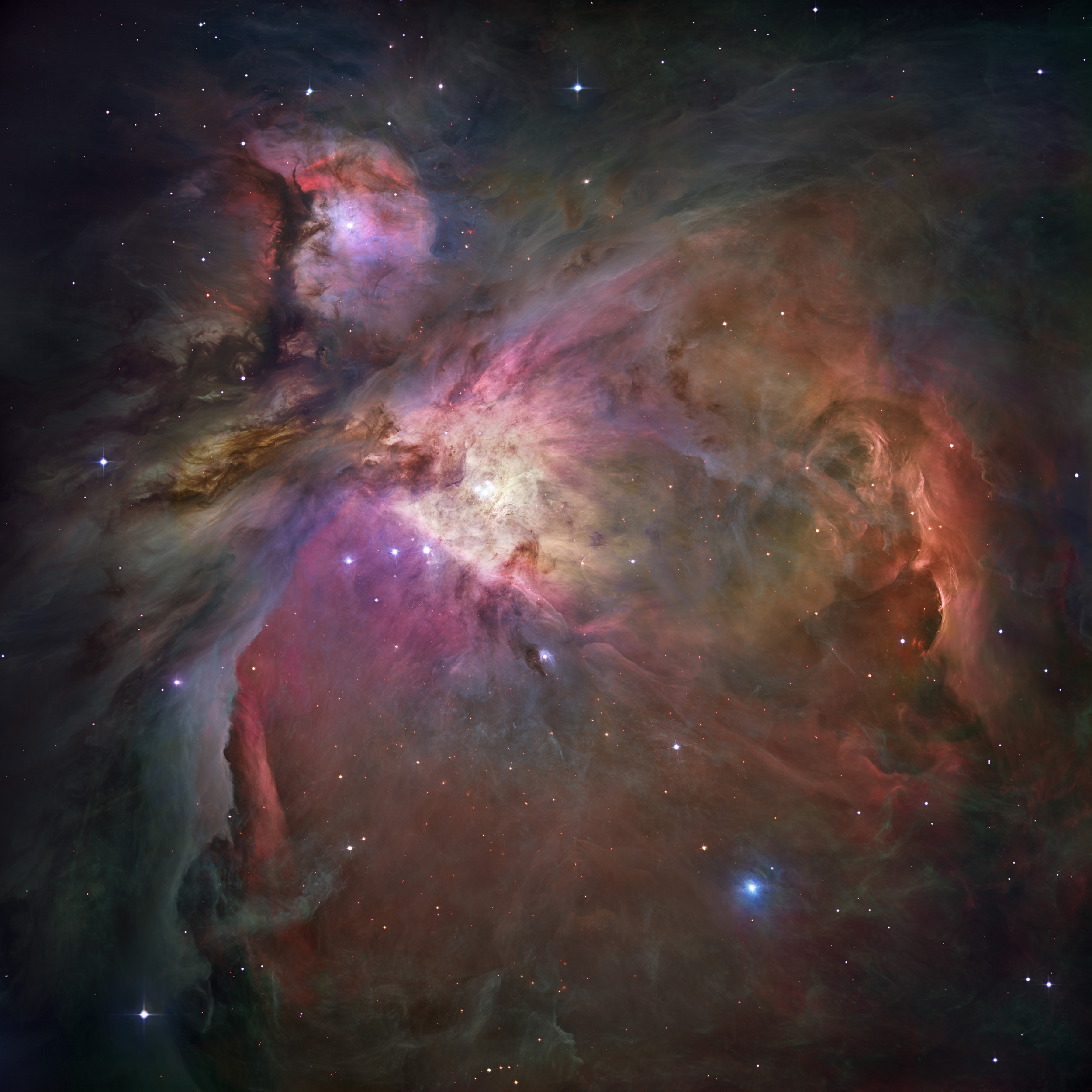
NASA, ESA, M. Robberto (Space Telescope Science Institute/ESA) and the Hubble Space Telescope Orion Treasury Project Team - hubblesite.org spacetelescope.org,
Public domain, wikimedia
M42, the Nebulaof Orion: a group of 3 stars under the Belt and perpendicular to it are visible to the naked eye. They make up ‘Orion’s Sword’. The central star in this group is actually a nebula, M42. It is an enormous agglomeration of gas and dust with a diameter measuring 24 light-years located 1,300 light-years from Earth. The gases present in the agglomeration are mostly lit up by a group of newborn stars called the Trapezium cluster.
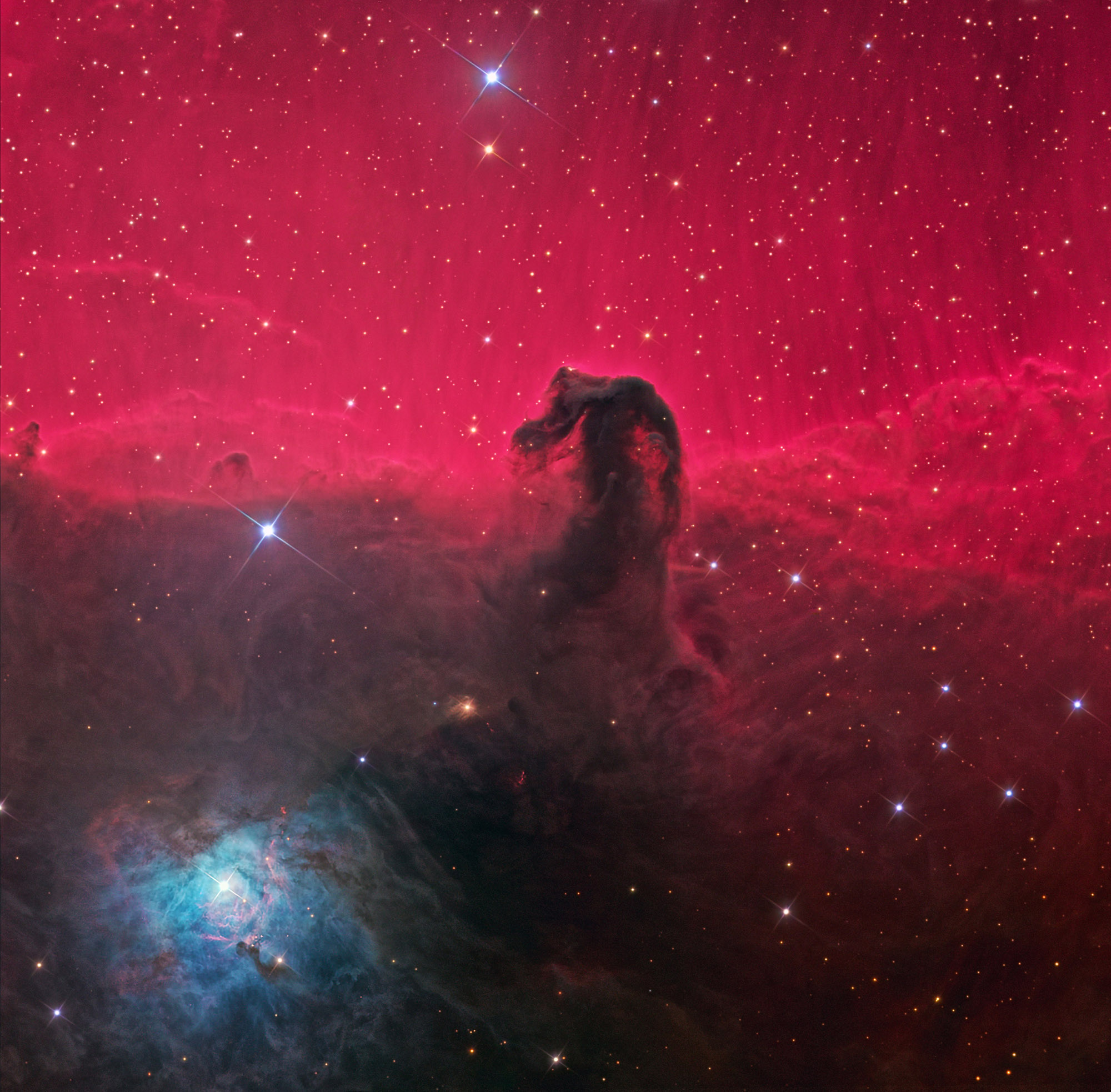
Ken Crawford,
CC BY-SA 3.0, wikimedia
B33, the Nebula Horse Head is one of the most photographed objects in the sky and it is near the Belt of Orion but is not very easy to see. Its name comes from the fact that its shape looks like the horse’s head (the knight) in a game of chess. It is a dark nebula, made up of gases and thick dust, that stand out against a red carpet of hydrogen gas illuminated by a star not far from it. B33 is about 1,500 light-years from us.
Southern Hemisphere: Orion is visible at the same time of the year as in the Northern hemisphere but rises higher in the sky. At the southern middle latitudes, in mid February, right after sunset, we find it overhead at the zenith.